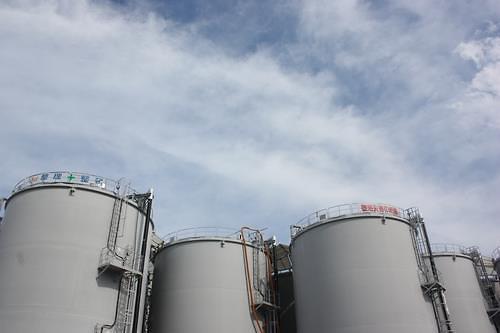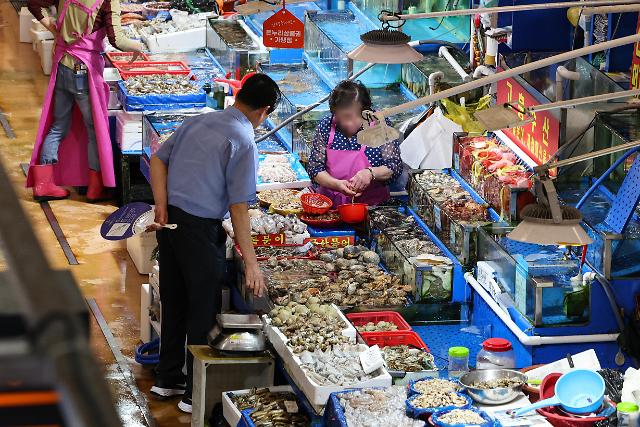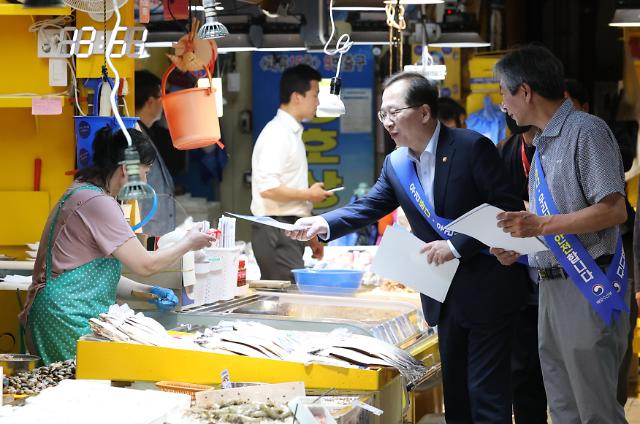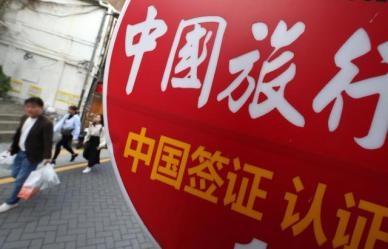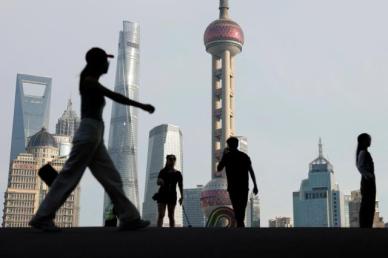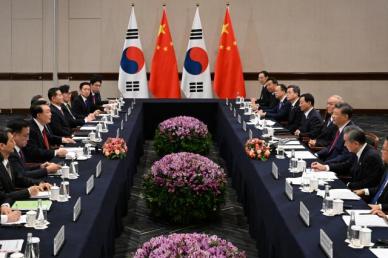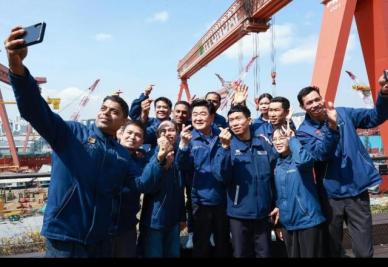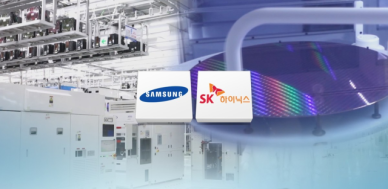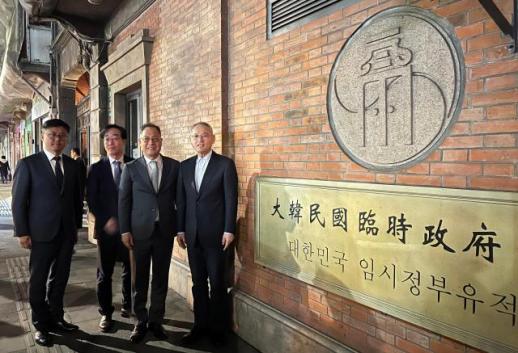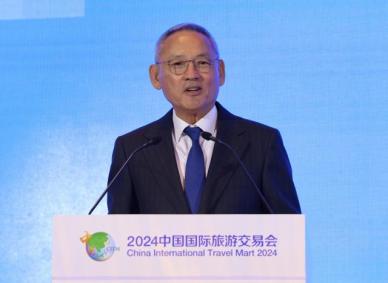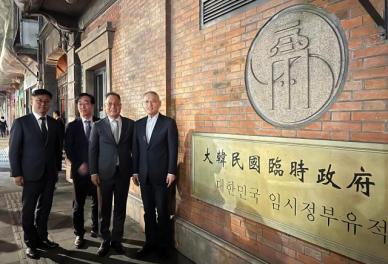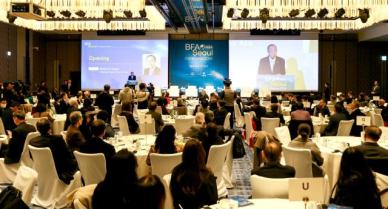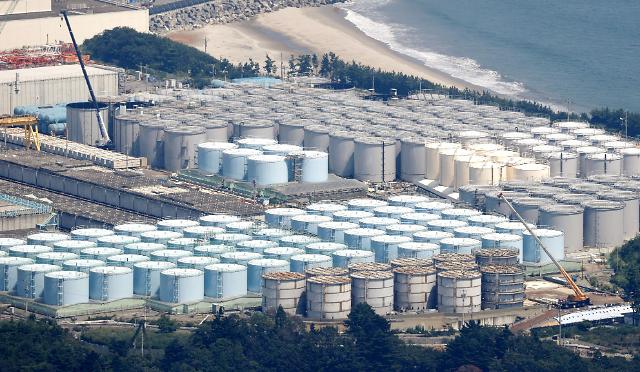
Japanese government approved the scheme of discharge of contaminated water on April 13th,2021, and planned to release all the ALPS Treated water in the storage tank of Fukushima Daiichi NPS into the sea in 30 years since 2023. The decision has triggered global concern and anxiety. Although Japanese government and Tokyo Electric Power Company Inc.(TEPCO) declared that contaminated water in storage tanks can be treated by ALPS (Advanced Liquid Processing System) to meet the regulators’ safety standards, many scientists and scholars doubted: first, the activity levels of critical nuclides in contaminated water haven’t been monitored and analyzed by TEPCO, so the data is incomplete and imperfect; second, the filters of ALPS have gone out of order several times, and has resulted that 72% of treated water cannot meet the release standard and need to be disposed once more. As pointed from review of International Atomic Energy Agency (IAEA) Task Force seted up for treatment of contaminated water from Fukushima (IAEA Review of Safety Related Aspects of Handling ALPS Treated Water at TEPCO’s Fukushima Daiichi Nuclear Power Station), TEPCO need to characterize the nuclides in contaminated water completely, and offer the source term that is conservative enough and coincident with the fact. It follows that there are many unsolved problems with the source term of contaminated water from Fukushima, and if Japanese government and TEPCO discharge the radioactive water wilfully into the sea, uncontrolled release may take place. Therefore, it is of great importance of solving current questions for safety before the contaminated water is treated.
1. Many important nuclides were not considered or considered insufficiently in source term of contaminated water from Fukushima.
Source term of contaminated water including composition and activity is the input of simulation of nuclides dispersion and assessment of environmental impact, and the accuracy and reliability of source term is vital. The contaminated water from Fukushima is complicated in composition, fluctuated wildly in activity level, and hard to be monitored.
There are two types of source for Fukushima contaminated water: first, the continuing injected coolant used to prevent reactor core melting down further; second, the produced waste water when rain and groundwater flow into the melted reactor and make contact with the radioactive materials. The radioactive contaminated water is gathered, sent to ALPS to treat, and stored in the storage tanks in the cite of Fukushima Daiichi NPS. Millions of tons of contaminated water has been stored in the tanks of Fukushima Daiichi NPS at present. Large amounts of radioactive water will be produced constantly in future according to the process of Fukushima Daiichi NPS’s retirement, untill the spent fuels are removed.
There are significant differences in compositions and concentrations of nuclides between the contaminated water from Fukushima and liquid effluent released during normal operation of NPS because of the distinct sources of water. Theoretically the contaminated water from Fukushima contains all hundreds of nuclides in reactor core including fission nuclides, uranium isotopes and transuranic nuclides for the reason that it comes from the waste water that contacting melted reactor directly. TEPCO chose 64 nuclides including H-3, C-14 and the others, and set up the release limit (activity concentration) for them. In the report of TEPCO issued on March 31st of 2021, during the period from April of 2013 to March of 2021, all activity concentrations of 13 nuclides (only 13 nuclides’ concentrations were offered) were obviously above the background levels of according nuclides in surface seawater of Western Pacific. The activity concentration of H-3 was 105~107Bq/L, and the concentration was above the release limit (6×104 Bq/L) set by Japanese regulators. In some periods, activity concentrations of most radioactive nuclides were above the release limits, such as Sr-90, Ru-106, Sb-125, I-129 and Cs-137, etc.
According to the report of IAEA, only the contaminated water in storage tanks will be sampled and monitored during the discharge, including: Cs-134, Cs-137, Sr-90, C-60, Sb-125, Ru-106, I-129, Tc-99, C-14, and gross activity of α and β.
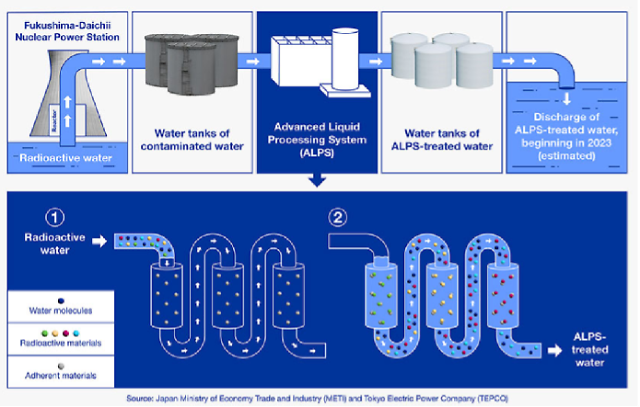
IAEA Task Force reviewed the scheme of discharge of contaminated water from Fukushima, and gave advice for TEPCO on the source term that characteristics of nuclides in the tanks should be described comprehensively, the actual samples should be gathered and monitored in laboratory, and proposed the conservative enough and practical source term. Only part of nuclides in actual samples are analyzed by Japan, while Task Force hope that more information will be provided, such as how to ascertain the composition of radioisotope in every reactors, and the hypotheses put forward in calculating producing, loss and decay of nuclides by using professional software. The Task Force believed that relevant physical and chemical characteristics of nuclides in contaminated water and how the characteristics influence the environmental behavior of nuclides need to be acquired further. Meanwhile, IAEA Task Force hope that α nuclides especially the uranium isotopes, transuranic nuclides and nuclides with potential global impact after dischared into the sea will be monitored by TEPCO. However uranium isotopes are not listed in TEPCO’s inventory of 64 nuclides.
From the review comments and requirements of IAEA Task Force, source term of contaminated water from Fukushima has not been ascertained, and many unsolved questions affecting the safety of discharging still exist. It is too early to discuss the discharge of contaminated water for Japanese government and TEPCO. Following questions on source term and monitoring for contaminated water from Japanese Fukushima were considered.
Types of nuclides under consideration were incomplete. 64 nuclides listed by TEPCO were monitored and analyzed, and were chosen as the basis of control of discharge and environmental impact assessment. However the basis had many omissions. First, activity concentrations of only 12 nuclides beside tritium were offered, but the concentrations of remaining over 50 nuclides were not provided. Large uncertainty of information of source term brings great difficulty to make the subsequent monitoring plan and assess marine ecological environmental impact. For example, the report of TEPCO only gave the gross activity of α and β, and did not published concentration levels and treatment conditions of the other extremely toxic in radiation such as Pu-239, Pu-240 and Am-241 in contaminated water from Fukushima; Second, the list of 64 nuclides did not consist of uranium isotopes and other α nuclides which having long half-life and partly of which having great toxicity. This will undermine the effectiveness and credibility of the results of monitoring and environmental impact assessment. Besides Sr-90, TEPCO admitted C-14 in contaminated water for the first time on August 27th, 2020.
The hypothesis of morphology of nuclides is not conservative. Parts of nuclides may exist in the form of colloid because of the fine particles formed by the exfoliation of chemical precipitation agent and inorganic adsorbing material. The hypothesis that all nuclides in contaminated water in ALPS are soluble may not be adequate. The important characteristics of source term which are highly related with the environmental safety had not been taken into account when the source term is determined. TEPCO should analyze that whether nuclides in the form of colloid exist in the contaminated water, and master the differences between the colloid and soluble nuclides in environmental dispersion behavior and environmental enrichment in orde to evaluate the successive impact.
2. Monitoring plan was incomprehensive and incomplete
The monitoring of 62 nuclides besides tritium and C-14 was lacking for plan, and the monitoring of other nuclides except for the common ones was absent especially. The criteria of meeting the release limit of Japanese for contaminated water is that the sum of all activity concentrations of 63 nuclides except for tritium is less than one. According to the monitoring plan of TEPCO published earlier, 7 nuclides such as Cs-134, Cs-137, Sr-90, Co-60, Sb-125, Ru-106 and I-129 in samples were monitored, the fixed value of 0.22 was adopt as activity concentration of C-14, and the fixed value of 0.3 was used as the sum of concentrations of the other 55 nuclides. After the review of IAEA Task Force, TEPCO updated the monitoring plan in terms of adding the monitoring of Tc-99 and C-14 in samples and developing routine monitoring for 9 nuclides. However, in the aspect of accuracy and discharge control, all the 64 nuclides should be monitored in order to meet the demand of regulation, master the activity concentration of every nuclide, diminish the error of estimate, and prevent excess release. As result, the means of monitoring a few nuclides by TEPCO is not a scientific scheme.
Actual effect of the treatment of ALPS cannot be ascertained by monitoring a few nuclides barely. The core technologies of ALPS are absorption which is useful to get rid of strontium and cesium and chemical precipitation which is adopt to remove the other nuclides. The effect upon treatment particular for chemical precipitation is closely related to source term. If the composition of nuclides of source term change, so does the effect of ALPS’ treatment of 62 nuclides. The scheme which monitoring 9 nuclides and the gross activity of α and β only cannot correctly grasp the fluctuation of concentrations of all nuclides in treated water owing to the change of source term, so the quality of assessment of treatment was impaired.
No on-line monitoring instruments were set up at the rear of monitoring tanks. Only the emergent insulation valves were installed to stop releasing when the abnormality was found on dilution rate and monitoring data, but no on-line radioactivity monitoring instrument was set up at the rear of the monitoring tanks, and the risk of excess discharge cannot be controlled effectively. In order to prevent and control abnormal discharge of liquid effluent, the groove type of discharge equipment with on-line interlock and alarm monitoring system at the discharge port is utilized by NPS commonly. When the radioactivity concentration of liquid effluent monitored by on-line system is above the release limit regulated, the discharge will be terminated, and the water will go back into the liquid waste treatment system to be treated once more.
Hypothesis on the composition of water or the proportion of nuclides in water was not conservative. The impact on human and marine organism differs in distinct nuclides and exposure pathways. The proportion of some nuclides having larger contribution to dosage (such as I-129) were not presumed conservatively, and the fixed proportion was used. These will cause that the sum of portions of nuclides were reasonable (lower or equal to one) but the actual dosage was higher than ideal assessing dosage. Japan government should analyze scientifically and carefully, and shouldn’t estimate simply to neglect the impact of highly toxic nuclides.
3. ALPS has flaws and its credibility was doubted
Present discharge scheme and assessment is based on the fact that the concentration of contaminated water after treatment can meet the release limit, but the opposite is the case. According to data issued by TEPCO, concentrations of 66% of 1.243 million cubic meters treated water by ALPS cannot meet the criteria of release at present, and concentration of 18% of which is even 10 to 20000 times of limit. It cannot be known by now whether the contaminated water beyond limit can meet the standard after treatment of ALPS once again. The scheme of TEPCO didn’t consist of description of how to ensure treated water meeting the release standard, and the assessment conducted by TEPCO didn’t contain the analysis of impact of water failing to meet the standard.
Composition of contaminated water is complicated and hard to be treated,so the treatment of ALPS will not achieve the desired effect. As declared by Japanese government, during the early period of treatment for contaminated water from Fukushima (2013~2019), because the treatment technique was immature, the frequency of changing filters in high radioactive environment was low, the chemical composition of contaminated water varied wildly, and malfunctions occurred occasionally, the effect of treatment of ALPS was not stable, with the result that the gross normalized concentrations of nuclides except for tritium in about 70% of treated water by ALPS were still above the release limit regulated by Japan. The contaminated water with concentration above the limit need to be treated once again to decrease its concentration to the release limit. It also indicated that ALPS treated I-129 ineffectively, and the concentration of I-129 in water from Fukushima before 2019 was still above the release limit regulated by Japan (9 Bq/L). Moreover, the treatment effect of ALPS was so unstable that the concentration of Sr-90 varied wildly, even reached the value of 104 Bq/L which was far beyond the release limit (30 Bq/L). It shows that the treatment is a great challenge for contaminated water whose composition is complicated and no international experience in mature can be referred to, so it should be highly regarded whether the water could be treated to meet the release limit.
Complicity and uncertainty of secondary treatment as well as the impact of failure of secondary treatment (including the impact of contaminated water both stored at present and produced in future ) were not mentioned in TEPCO’s report. There are more difficulties in secondary treatment of contaminated water. In the next few years, the overall performance of ALPS is very unstable. Only 0.25% of contaminated water have been conducted secondary treatment, the length of time for secondary treatment was not published, the plan of secondary treatment of contaminated water was not published, no schedule of treatment was offered, and it was rather doubted that secondary treatment could be pushed forward on schedule. Besides 1.284 millions of cubic meters of contaminated water in storage tanks, up to 456.25 thousands of cubic meters of contaminated water which sent into ALPS to be treated as well will come into being by the year of 2030. Japanese government and TEPCO cannot provide more details of the total mount of nuclides scheduled to be discharged in next decades.
Lots of problems revealed tremendous flaws in the management of TEPCO, and the credibility of data provided by TEPCO was suspect. According to released information from TEPCO, ALPS alarmed when operators transferred the sludge produced in process of water treatment into the other containers. 24 of 25 filters in the water treatment equipment were found broken. In the regular inspection meeting for Fukushima Daiichi NPS organized by Japanese Nuclear Regulation Authority, TEPCO admitted that inspections on filter malfunction were neglected after two accidents of forced changing of vent filters. Based on the public messages by TEPCO, such damages were found in all filters two years ago, but the causes of damages were never investigated, and no protective precautionary measures were taken after changing the filters. On September 21st, 2021, TEPCO declared that 5 more filters were found broken in ALPS, and radiations were detected around most of the broken filters. Japanese Nuclear Regulation Authority once observed that tremendous problems lied in the management of TEPCO, and the most serious problem was the attitude of TEPCO; TEPCO should act on the problem more swiftly to minimize the risk of leaking radiation to environment. Earlier, a series of frauds and dishonesties occurred in TEPCO, and ongoing problems revealed the contempt of TEPCO. Therefor the data of TEPCO was not credible.
4. Suggestions
Japanese government and TEPCO declared that discharge of contaminated water into the sea conformed to international conventions and complied with safety requirements. But the declaration was based on the hypothesis that ALPS treated water can meet the discharge standards. However, according to the information from Japanese government and TEPCO, the hypothesis cannot come into existence because: (1) the conservation of source term of contaminated water was not adequate for the reason that the composition and safety characteristics of nuclides were not well understood, and the information of uranium isotopes and transuranic nuclides was missing; (2) Only few nuclides were monitored, and most of other nuclides were not monitored and controlled; (3) Shortage existed in the design and operation of ALPS, concentrations of more than 70% of treated water were above the release limits, and the treatment effect and operation reliability of ALPS were in doubt.
As result, there are several unsolved safety questions in the scheme of discharge into the sea for the contaminated water from Fukushima. The further study on source term and more works on monitoring need to be carried out to make sure the impact on marine ecological environment and human health as low as reasonably achieved. Following works need to be done by Japanese government and TEPCO.
(1) Information on source term of contaminated water should be publicly known by international society, especially by the surrounding countries. By more comprehensive monitoring and more scientific analysis, the composition and concentrations of nuclides in every tank, characteristics of nuclides having important impact on environment after discharge, and actual amount of radioactive materials released into the sea must be mastered.
(2) Monitoring plan should be improved in that 64 regulated nuclides need to be monitored and on-line monitoring instrument should be set up at the rear of monitoring tanks to prevent excess release.
(3) Issues such as shortages and flaws in design and reliability should be investigated further, and the scheme of secondary treatment need to be clarified in detail. Discharge should not be performed before the issues properly solved.
(4) Protracted nature and uncertainty of detriment from contaminated water need to be evaluated sufficiently before disposing the ALPS treated water. The scheme of discharge into the sea cannot be regarded as the only solution, and another more feasible and safe options except for discharging into the sea should be considered, such as evaporation.
Reference
[1] IAEA Review of Safety Related Aspects of Handling ALPS Treated Water at TEPCO’s Fukushima Daiichi Nuclear Power Station,Report 1: Review Mission to TEPCO and METI(February 2022).

